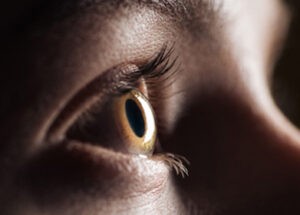Treatments and Procedures
Infections
Infection of Conjunctiva known as Conjunctivitis and Cornea known as Keratitis is very common which is treated easily. It causes redness, pain, watering and dirty discharge from the eyes.
Allergies and Keratitis used to be taken care of early which if left uncared or left delayed can lead to permanent impairment of vision, even blindness.
Cataract Surgery
Cataracts are a common problem. especially among middle aged persons. Rectifying cataracts may need a simple corrective surgery called Cataract Surgery.
Cataract surgeries are simple procedures, usually taking less than an hour. On successful completion of the surgery the patient is discharged on the same day. On surgery day, the patient is prepped and given local anesthesia. The damaged and cloudy lens is replaced with a clear and focused artificial lens.
Their vision might be blurry for a while but will improve in a couple of days. Patients may experience slight discomfort and itchiness during this healing period.
Lasik Surgery
LASIK is the abbreviation of laser-assisted in situ keratomileusis. LASIK is the most common type of refractive surgery. With LASIK, one can avoid being dependent on glasses or contact lenses.
Usually done between the ages of 21-35, LASIK surgeries reshape the cornea. The procedure removes a tissue under the surface of the cornea using a laser. This fixes any issues the eyes might have with focusing images. LASIK surgeries are effective treatments for nearsightedness, farsightedness or astigmatism.
Patients need to stay at the hospital after the surgery and can return home the same day. Patients can see an improvement in vision from the very next day.
PRK
PRK is short for photorefractive keratectomy. Another kind of Refractive Surgery useful to correct nearsightedness, farsightedness and astigmatism. PRK saves you from the trouble of wearing glasses or contacts.
Some patients may be better suited to PRK than LASIK. Though a short procedure takes less than half an hour, patients may not be able to drive for a few weeks. A significant improvement in vision can be experience after about 4 weeks.
Glaucoma Surgery
Glaucoma is a result of damages in the optic nerve. Generally it’s an increase in eye pressure due to fluid circulation block that leads to this damage . If left untreated glaucoma can even result in blindness.
Glaucoma surgery aims to reduce this pressure by opening up the blocks that lead to fluid build up. Removing the blocks in the drainage pathway enables the outflow of the fluid. This procedure is called Trabeculectomy .
This procedure also doesn’t need a stay at the hospital. The patient can return home on the same day. But it may take up to a week after the surgery for the patient to resume normal activities. During the healing period, the eyes may water or look red.
Diabetic Retinopathy Surgery
Diabetic retinopathy can affect people with high blood sugar. High blood sugar can cause damage to the blood vessels in the eye. This causes leakage of fluid and blood into the retina.
2 procedures are generally used to treat Diabetic Retinopathy.
In the first procedure, a laser is used to reduce swelling in the eyes and stimulate new blood vessel growth. This could also prevent the risk of future leaks in the blood vessel.
The second procedure known as Vitrectomy aims to get rid of the leaked blood and scar tissue in the eye. This procedure also prevents the risk of future leaks in the blood vessel.
Both procedures may need a stay at the hospital for a while after the surgery.
Macular Degeneration Surgery
ARMD( age related macular degeneration) occurs due to the breakdown of the macula with age. A serious version of this is wet ARMD. Patients see dark spots in their central vision due to leaky blood vessels.
A surgical procedure with a laser is done to treat wet ARMD. The surgeon burns away unwanted blood vessels using lasers.
This procedure doesn’t need a stay at the hospital. However, the patient’s vision may be blurry for a while. In a few weeks there will be a marked improvement in vision.
Pediatric Ophthalmology
A branch of ophthalmology, dedicated to curing eye problems affecting kids.
Some common eye related ailments affecting our kids are:-
- Squint
- Drooping of upper eyelids
- Lazy eye
- Refractive-errors
Eye problems in newborn kids
- Congenital glaucoma
- Cataract
- Retinopathy of Prematurity (ROP)
It is critical to a kid’s future that any eye related problems are detected early. Especially in newborn children, early detection and treatment is of paramount importance. If treatment is not done within the first 6 months, the babies could grow up to have visual impairments in the future. Even in older kids, parents must ensure regular check ups in order to avoid complications.
Advanced Eye Procedures
Robotic Surgeries
The next advancement Ophthalmology is undoubtedly surgeries assisted by robots. In many western countries, robots assisting in simple eye surgeries have become commonplace. The latest strides in robotic technology offer very exciting prospects. It has enabled successful experiments of complex surgeries done by robots. This progress could make a world of difference to those suffering from eye related illnesses. The precision offered by robots can’t be matched by human hands.
Dr.Rela’s is proud to play our part in the next step of evolution in ophthalmology tech.




